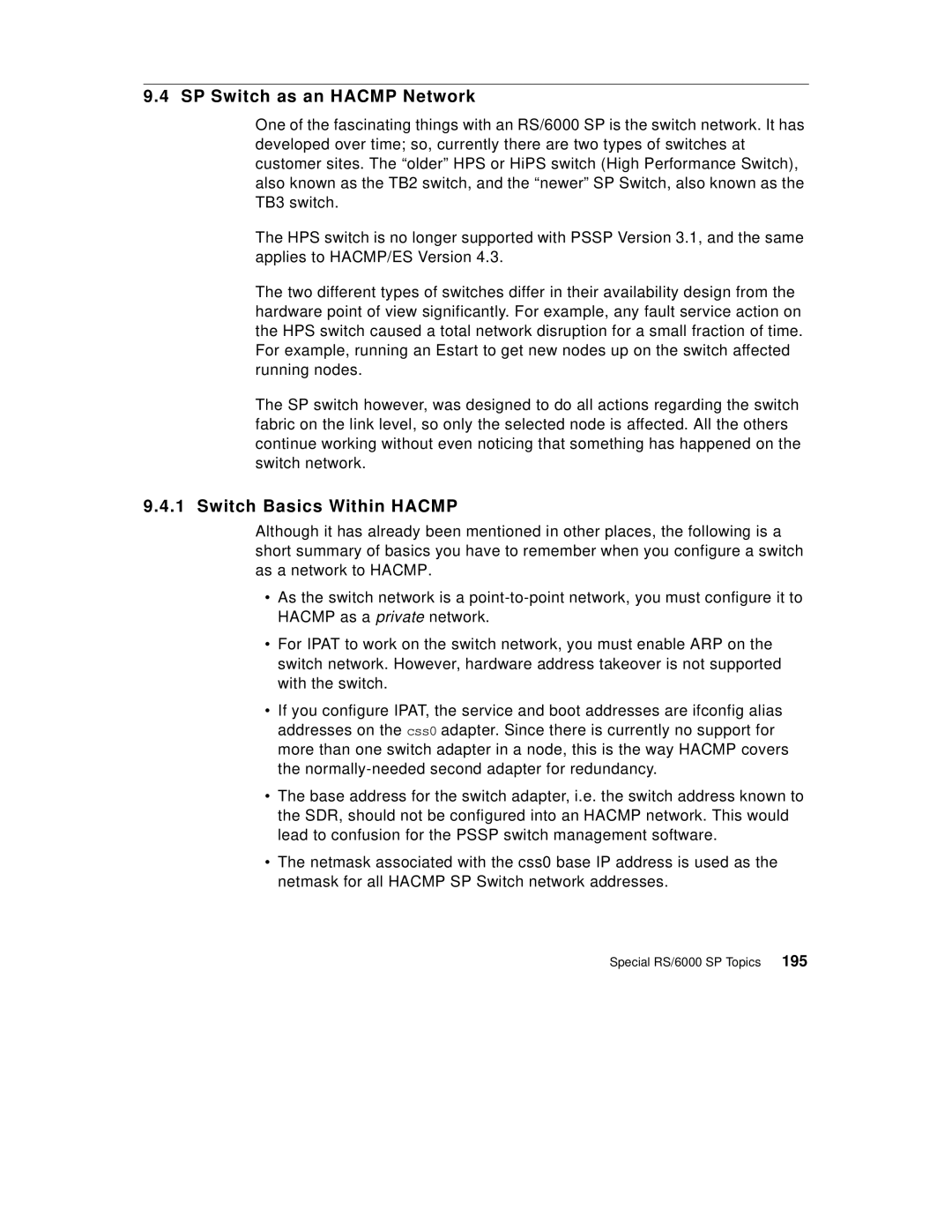9.4 SP Switch as an HACMP Network
One of the fascinating things with an RS/6000 SP is the switch network. It has developed over time; so, currently there are two types of switches at customer sites. The “older” HPS or HiPS switch (High Performance Switch), also known as the TB2 switch, and the “newer” SP Switch, also known as the TB3 switch.
The HPS switch is no longer supported with PSSP Version 3.1, and the same applies to HACMP/ES Version 4.3.
The two different types of switches differ in their availability design from the hardware point of view significantly. For example, any fault service action on the HPS switch caused a total network disruption for a small fraction of time. For example, running an Estart to get new nodes up on the switch affected running nodes.
The SP switch however, was designed to do all actions regarding the switch fabric on the link level, so only the selected node is affected. All the others continue working without even noticing that something has happened on the switch network.
9.4.1 Switch Basics Within HACMP
Although it has already been mentioned in other places, the following is a short summary of basics you have to remember when you configure a switch as a network to HACMP.
•As the switch network is a
•For IPAT to work on the switch network, you must enable ARP on the switch network. However, hardware address takeover is not supported with the switch.
•If you configure IPAT, the service and boot addresses are ifconfig alias addresses on the css0 adapter. Since there is currently no support for more than one switch adapter in a node, this is the way HACMP covers the
•The base address for the switch adapter, i.e. the switch address known to the SDR, should not be configured into an HACMP network. This would lead to confusion for the PSSP switch management software.
•The netmask associated with the css0 base IP address is used as the netmask for all HACMP SP Switch network addresses.
